Whenever we conduct an annual checkup on our Leopard Sharks and rays, we make sure to collect a blood sample from each individual. But why? So much is still unknown about sharks and rays as a whole.
Studying shark and ray blood allows us to uncover clues that reveal a wealth of information about an individual. Are they eating a balanced diet? Is an individual pregnant? Are any environmental factors impacting their health? We can answer all these questions and more by studying their blood.
How do you get a blood sample from a shark? A ray?
Drawing blood from a shark and ray is a little more complicated than it is for humans. It takes an incredible amount of collaborative work to get the job done!
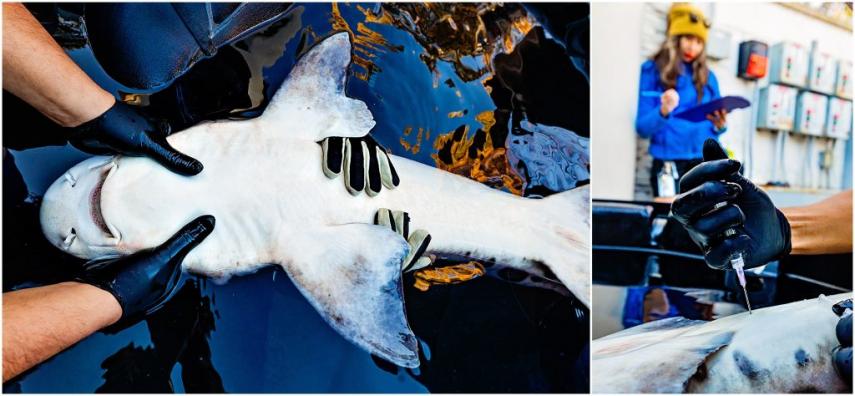
Just like doctors use a needle to draw blood from us humans, our veterinarians use one as well. They’ll draw blood from a vein on the underside of a shark near the caudal fin aka “tail” The process is fairly quick and only takes a minute or two.
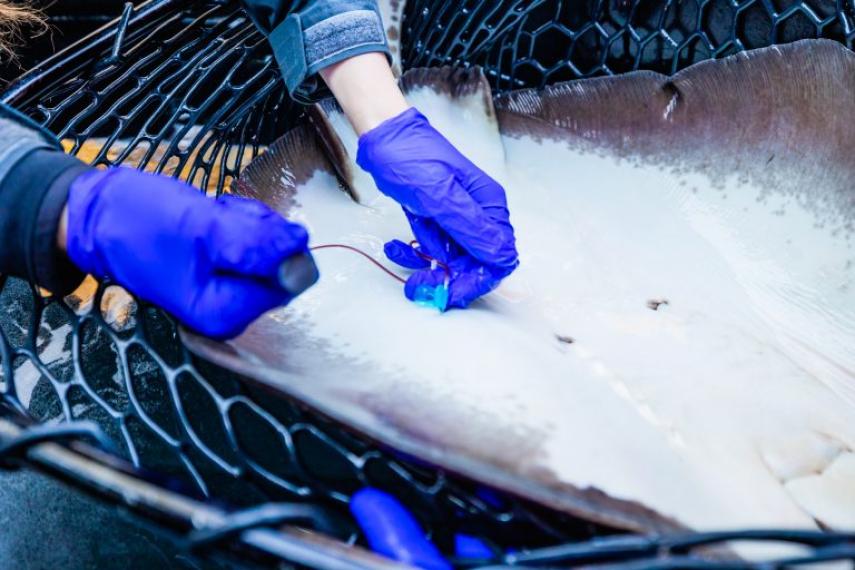
This process is similar for our rays, with one slight change. Since our rays have an extra defense mechanism — a venomous barb at the base of their tail – our Husbandry and Veterinary Team will put them under anesthesia before we collect blood. It allows our teams to safely handle the ray without adding stress to the animal or our staff. Our veterinarians aim to get about a vial of blood from each shark and ray.
Uncovering Clues
Once the blood is collected and labeled, the detective work begins. Our veterinarians perform tests – like blood smears, hematocrit tests and more – to analyze the makeup of each individual’s blood. During this investigation, they gather clues that help assess an individual’s overall health and establish “normal” baselines.
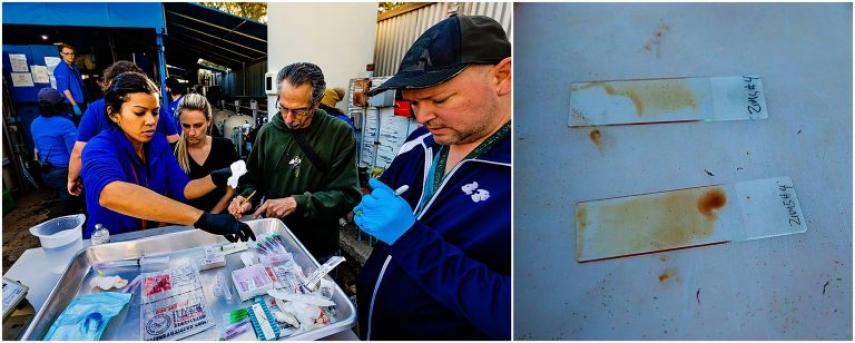
When we create a baseline for a species, we can document changes in individuals over time. Why is that important? Establishing a baseline may clue us into a possible health issue, helping to establish a diagnosis and guide treatment options. We can compare values over time to determine if the results are normal or abnormal. But that’s not all! We also establish a baseline for a particular species, for different age groups and sexes within species. This information is essential to the ongoing care and health management of the species.
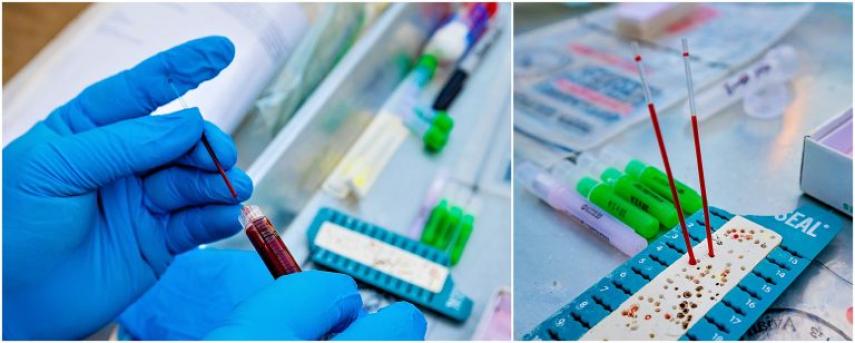
This information is not only saved for our own records, it’s also saved for other organizations as well. When we share our knowledge with other accredited zoos and aquariums worldwide, our knowledge base grows even further. This collaborative effort helps to support research that sets standards.
Why is this work important?
Sharks and rays play a critical role in marine food webs and ocean health. However, their populations are threatened from climate change, overfishing and other human impacts. To help protect the future of these species, we need to better understand them.
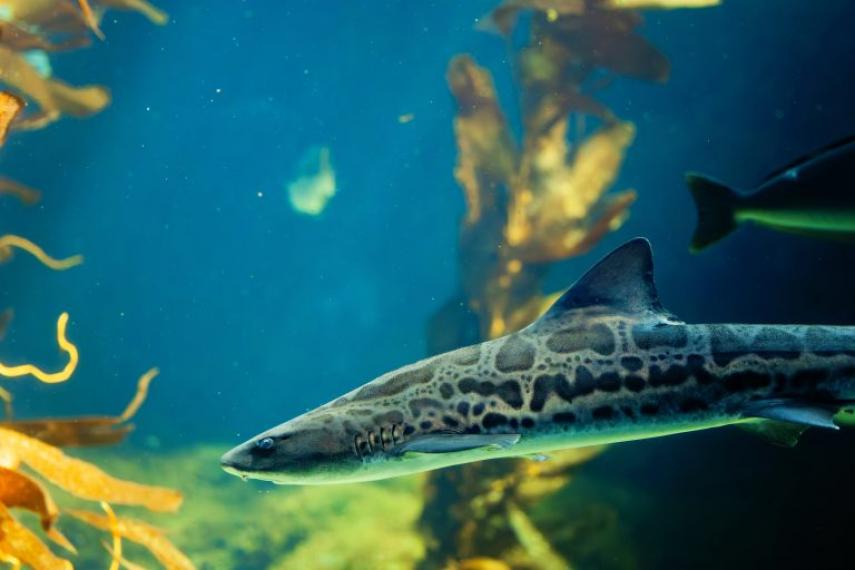
That’s why establishing and contributing to standards and baselines are so important. When we know more about the biology of sharks and rays, we can better understand how they may respond or adapt to changes in their environment. Overtime, these standards can significantly contribute to conservation efforts to protect and care for sharks and rays.
If you’re interested in learning how YOU can support the conservation of sharks and rays worldwide, you can find more information at AZA SAFE: Shark and Ray!
About Birch Aquarium at Scripps